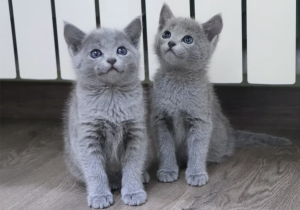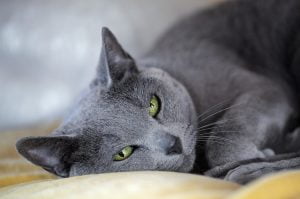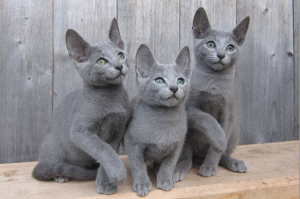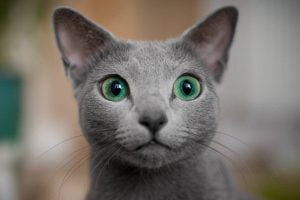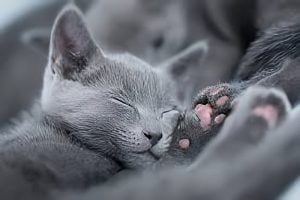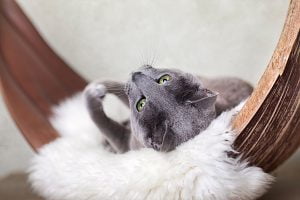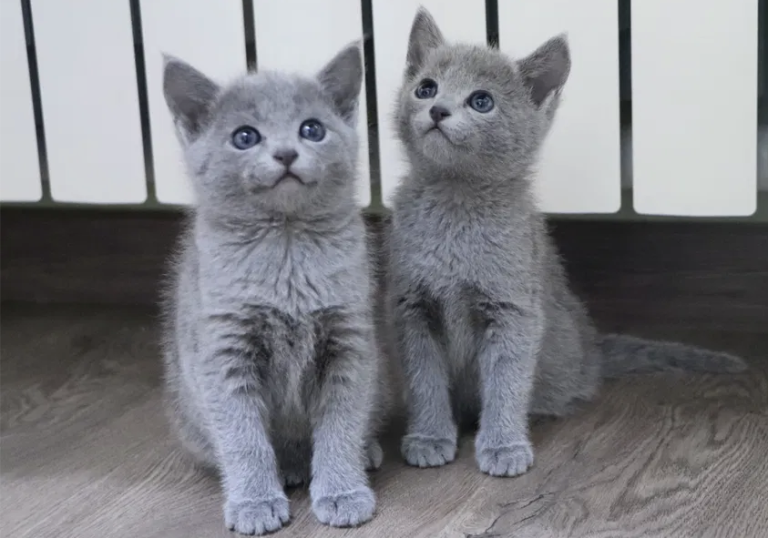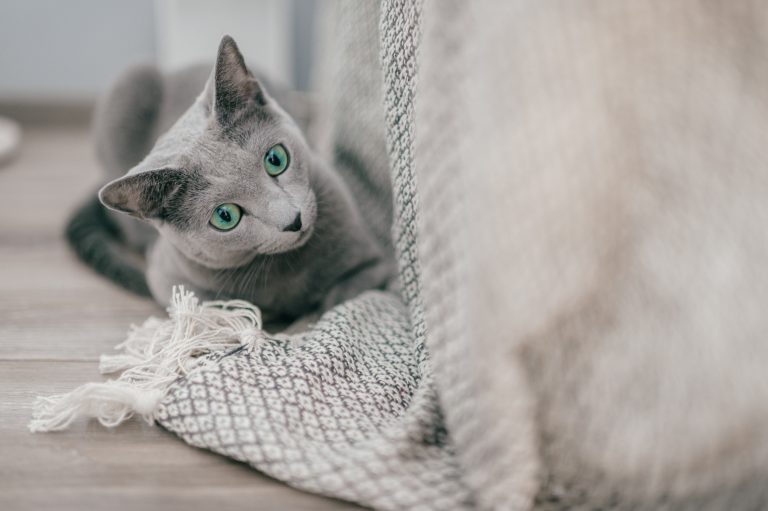Russian Blue cats are a unique and beloved breed that has gained popularity all over the world. Their striking silver-blue coat, playful personality, and affectionate nature have made them a popular choice for cat lovers.
The purpose of this article is to provide a comprehensive guide to Russian Blue cats, covering everything from their history and origins to their physical characteristics, personality traits, and care requirements. Whether you are a seasoned cat owner or considering adopting your first feline companion, this article will provide you with all the information you need to know about this remarkable breed.
So, sit back, relax, and get ready to learn all about Russian Blue cats and what makes them such special companions.
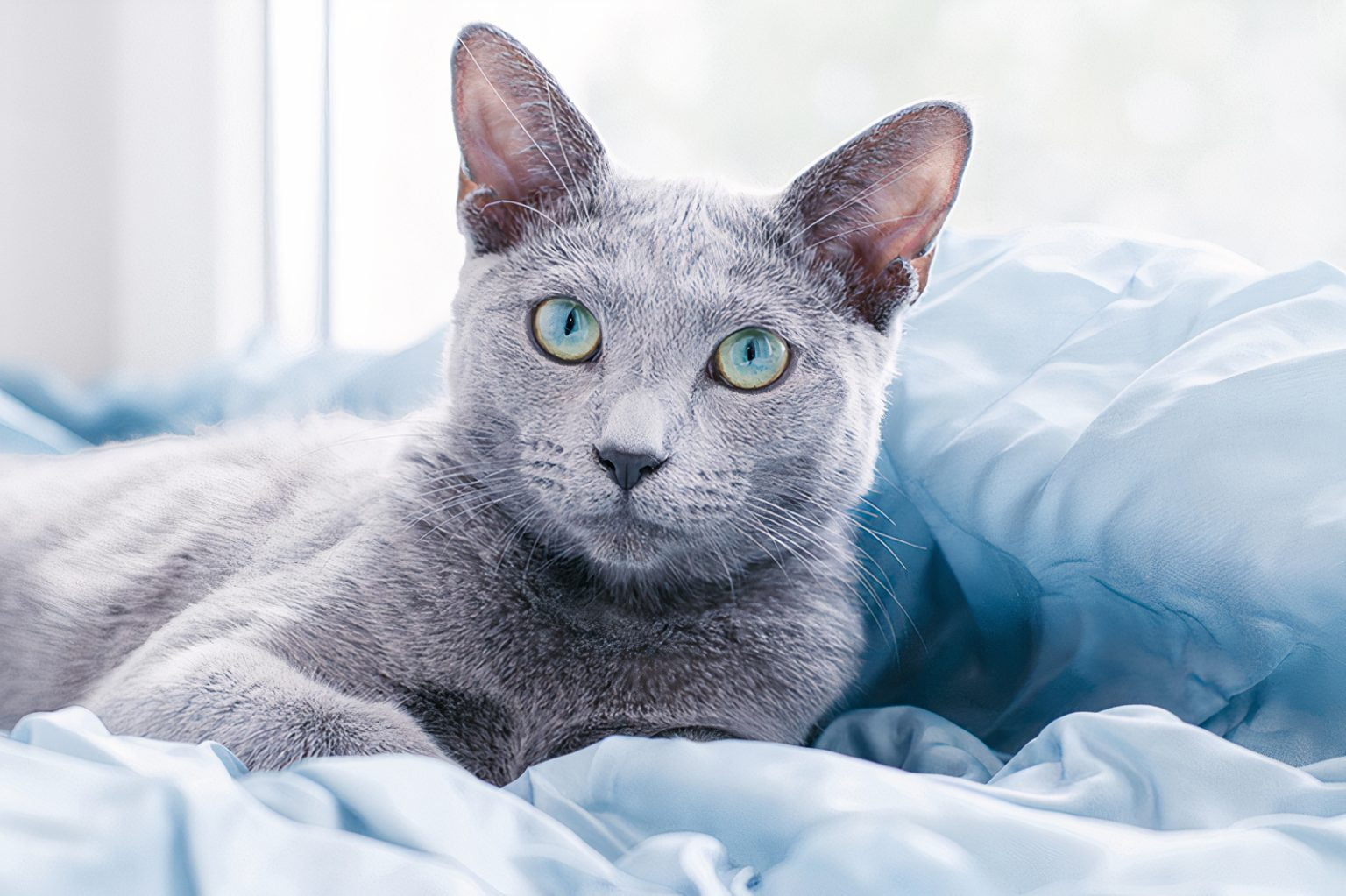
Discovering the Fascinating History of Russian Blue Cats
Russian Blue cats have a long and fascinating history that dates back to at least the 19th century in Russia. The exact origins of the breed are unclear, but they are thought to have originated in the port city of Arkhangelsk, in northern Russia. They were popular among sailors and traders, who valued them for their ability to catch rodents and their striking blue-gray coat.
Over time, the Russian Blue cat became a beloved companion animal, as well as a symbol of good luck and fortune. They were often given as gifts to royalty and other high-ranking officials, and were considered a treasured addition to any household.
The first recorded appearance of the Russian Blue cats was at a cat show in England in 1875, where they were called Archangel Blues. The breed was imported to England in the 1800s, and it quickly gained popularity due to its unique appearance and charming personality. Russian Blues were recognized as a distinct breed in England in the early 1900s, and they were later imported to the United States in the 1920s.
During World War II, the Russian Blue cat population suffered greatly in Russia due to food shortages and the destruction of their natural habitats. However, the breed was able to survive and thrive in other parts of the world, thanks to the efforts of dedicated breeders.
Today, Russian Blue cats are recognized as a distinct breed by cat associations all over the world. They are known for their distinctive appearance, intelligence, and playful personality.
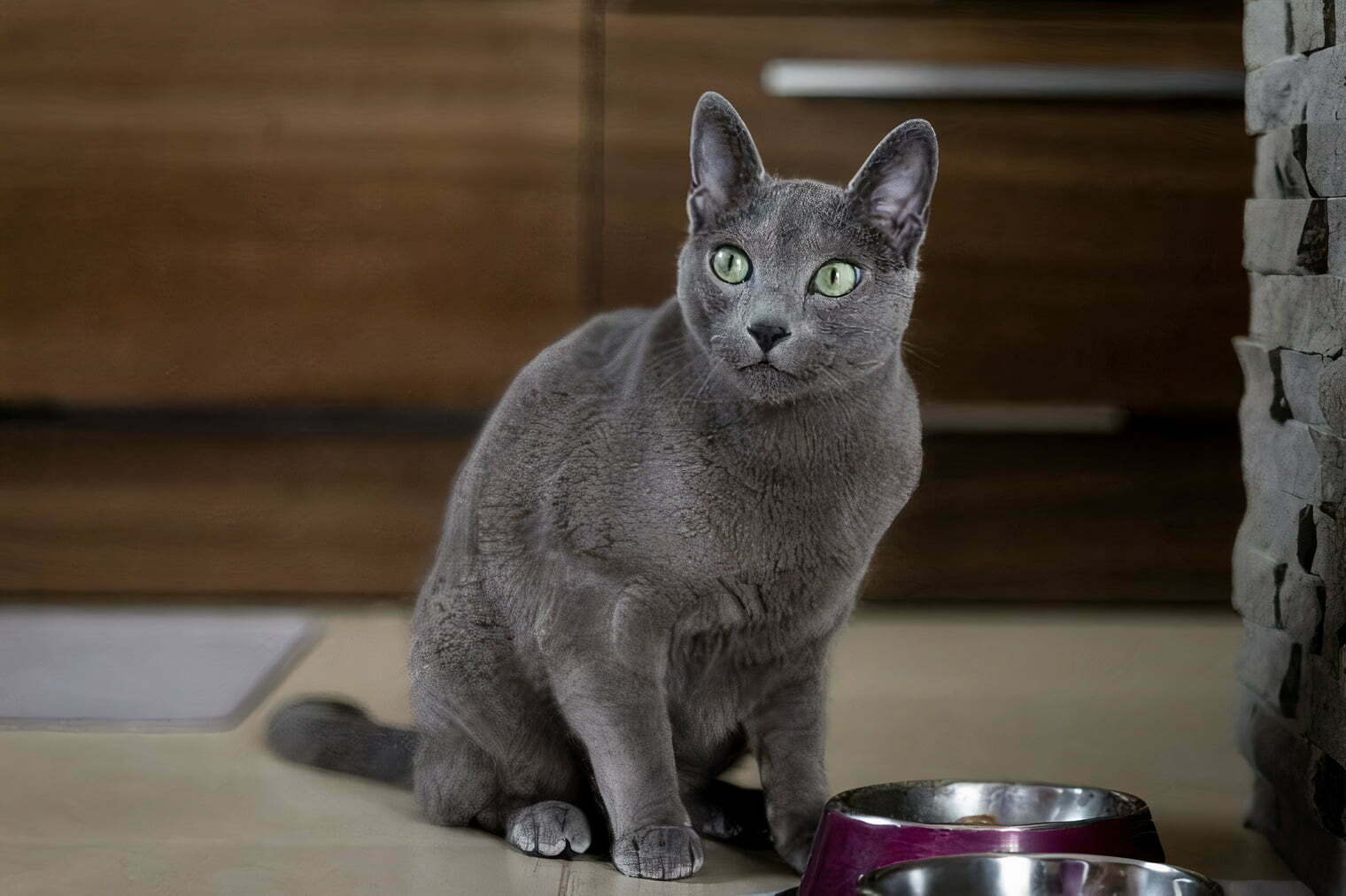
Breed Characteristics and Standards
Russian Blue cats are a fascinating breed with a unique set of characteristics and standards that make them stand out in the feline world. Here, we explore the defining traits of the Russian Blue breed and what makes them such a beloved pet.
Appearance:
The Russian Blue is a medium-sized cat with a distinctive silver-blue coat that is plush, dense, and soft to the touch. Their eyes are a striking emerald green, and their ears are large and pointed. The breed has a muscular build and a graceful, elegant gait.
Temperament:
Russian Blues are known for their intelligence, playfulness, and gentle disposition. They are very social cats that form strong bonds with their owners and enjoy being around people. They are also known for their quiet and calm nature, which makes them a great choice for families with children or other pets.
Health:
The Russian Blue breed is generally healthy and long-lived, with an average lifespan of 15-20 years. However, like all breeds, they can be prone to certain health issues, such as urinary tract problems and genetic diseases. It is important to choose a reputable breeder and provide regular veterinary care to ensure your Russian Blue stays healthy and happy.
Grooming:
The Russian Blue has a short, easy-to-care-for coat that requires minimal grooming. A weekly brushing to remove loose hair and maintain the coat’s soft texture is usually sufficient.
Breed Standards:
The Russian Blue breed is recognized by cat fanciers worldwide and has specific standards that must be met for show purposes. These standards include a silver-blue coat with black tipping, green eyes, and a wedge-shaped head with large ears that are set wide apart.
In summary, the Russian Blue is a breed of cat with a distinctive appearance, gentle temperament, and minimal grooming needs. They make excellent pets for families or individuals looking for a loyal companion.
Physical Appearance and Coat
Russian Blue Cats are known for their alluring physical appearance and luxurious coat. They are a medium-sized breed with a lean and muscular body, and their coat is short, dense, and plush. The breed’s coat is unique in that it appears to have a blue-gray color, but in reality, it is made up of black-tipped hairs that give the appearance of a blue sheen.
The breed’s head is wedge-shaped, with a straight nose and large, pointed ears that are set wide apart. Their eyes are large and almond-shaped, and are typically a bright green color. Their legs are long and slender, with oval-shaped paws and tufts of fur between their toes.
The Russian Blue’s coat is one of the breed’s most distinctive features. It is short and dense, with a soft and silky texture that is pleasant to the touch. The coat is a solid blue-gray color, with no markings or patterns except for a faint “ghost tabby” pattern that may be visible on some cats.
Maintaining the Russian Blue’s coat requires minimal effort, as they are not prone to matting or tangling. Regular grooming with a soft brush or comb will help to remove loose hairs and keep the coat looking healthy and shiny. In general, the Russian Blue’s coat is considered to be hypoallergenic, as it produces fewer allergens than other breeds due to its low levels of Fel d 1 protein.
Overall, the Russian Blue’s physical appearance and coat are key characteristics that set them apart from other breeds. Their striking blue-gray color, silky texture, and minimal grooming needs make them a favorite among cat enthusiasts and pet owners alike.
Temperament and Personality
Russian Blue Cats are known for their distinct personality and temperament. They are known for their intelligence, loyalty, and loving nature. These cats are typically reserved and may be shy around new people or in unfamiliar environments. However, once they warm up to their surroundings and get to know their owner, they are incredibly affectionate and playful.
One of the key characteristics of Russian Blue Cats is their intelligence. They are highly intelligent and curious, always exploring and learning about their environment. This also means they can be easily trained to do tricks or walk on a leash. They are also very adaptable and can adjust to different living situations, making them ideal pets for apartment living.
Russian Blue Cats are generally known for being quiet and gentle. They are not usually vocal and tend to communicate more through body language than through meows. However, they can be quite playful and enjoy interactive playtime with their owners. They are also known to form strong bonds with their owners and may follow them around the house or cuddle up in their lap.
In terms of temperament, Russian Blue Cats are often described as calm, sweet, and affectionate. They are generally good with children and other pets, although they may be hesitant at first. They are also known to be independent and may be content spending time alone while their owners are away.
Health Issues and Potential Concerns
Like all cat breeds, Russian Blue cats can be prone to certain health issues and potential concerns. Some of the most common health issues that Russian Blue cats may face include:
- Hypertrophic Cardiomyopathy (HCM): a genetic heart condition that can cause thickening of the heart muscle and potential heart failure
- Urinary tract issues: such as bladder infections or urinary blockages
- Dental issues: such as gum disease or tooth decay
- Obesity: these cats have a tendency to overeat, which can lead to health problems such as diabetes and joint issues
To ensure that your Russian Blue cat stays healthy, it is important to provide them with regular veterinary check-ups, appropriate vaccinations and a healthy lifestyle. This can include a balanced diet, plenty of exercise, and regular grooming.
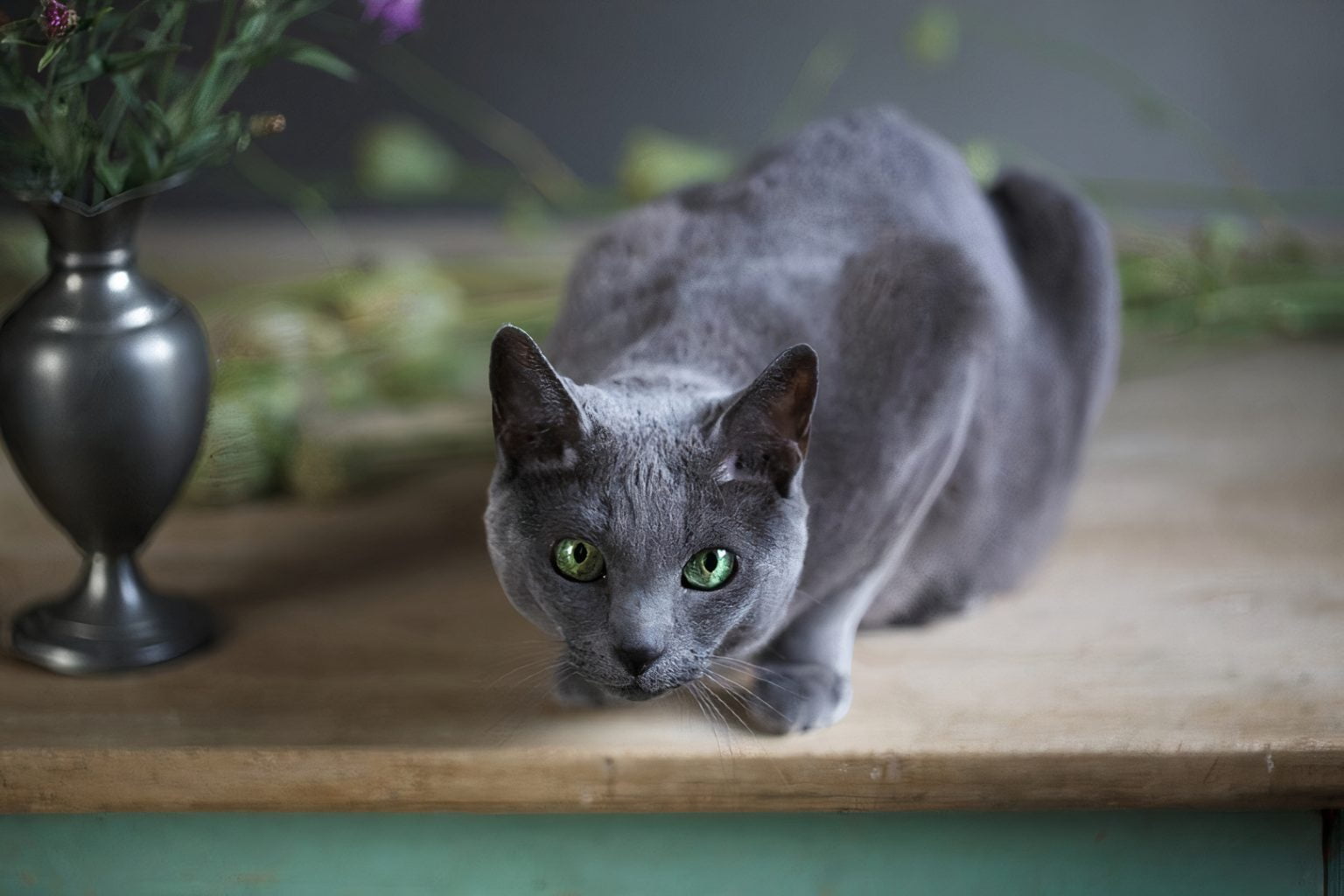
Care, Dietary and Nutritional Needs
Russian Blue cats are not only beloved for their striking appearance and affectionate personalities, but also for their relatively low-maintenance care needs. However, like all pets, they do require proper attention and care to maintain their health and wellbeing.
One important aspect of caring for a Russian Blue cat is providing them with a balanced and nutritious diet. These cats have unique dietary needs that must be met to ensure optimal health. They require a diet that is high in protein and low in carbohydrates. High-quality commercial cat food, either wet or dry, can provide the necessary nutrients for a healthy diet. It is also important to provide plenty of fresh, clean water at all times.
In addition to a healthy diet, regular veterinary check-ups are crucial for maintaining the health of your Russian Blue cat. Routine exams can detect and prevent health problems early on, which can help prevent serious health issues down the line. It is recommended to take your Russian Blue cat to the vet at least once a year for a check-up, and more frequently as they age.
Grooming is another important aspect of caring for a Russian Blue cat. Their short, dense coat requires minimal grooming, but regular brushing can help remove loose hair and prevent matting. They are generally clean cats and do not require frequent bathing, but occasional baths may be necessary if they become particularly dirty or oily.
Finally, providing plenty of physical and mental stimulation is important for the overall wellbeing of your Russian Blue cat. They are intelligent and active cats that enjoy playtime and interaction with their owners. Providing toys, scratching posts, and climbing structures can help keep them mentally and physically engaged.
Training and Behavior
Did you know that with the right approach your Russian Blue can be taught to perform tricks, walk on a leash, and even use the toilet?
To begin with, it is important to understand that Russian Blues are highly intelligent and enjoy mental stimulation. They are quick learners and respond well to positive reinforcement training methods, such as clicker training or treat rewards.
Russian Blues are also known for their playful and curious nature, which makes training them a fun and engaging experience. Some popular tricks that Russian Blues can learn include jumping through hoops, fetching toys, and even playing hide and seek.
Another important aspect of training Russian Blues is socialization. These cats are social creatures and thrive on interaction with their owners and other pets. By introducing them to new people, animals, and environments at a young age, they can become well-adjusted and confident cats.
When it comes to behavioral issues, Russian Blues are generally well-behaved and easy to live with. However, like any cat, they may exhibit unwanted behaviors such as scratching furniture or spraying. These issues can often be addressed through proper training, environmental enrichment, and providing appropriate scratching surfaces.
In summary, Russian Blues are intelligent and trainable cats that respond well to positive reinforcement training methods. By providing them with mental stimulation, socialization, and a stimulating environment, they can become well-adjusted and happy pets.
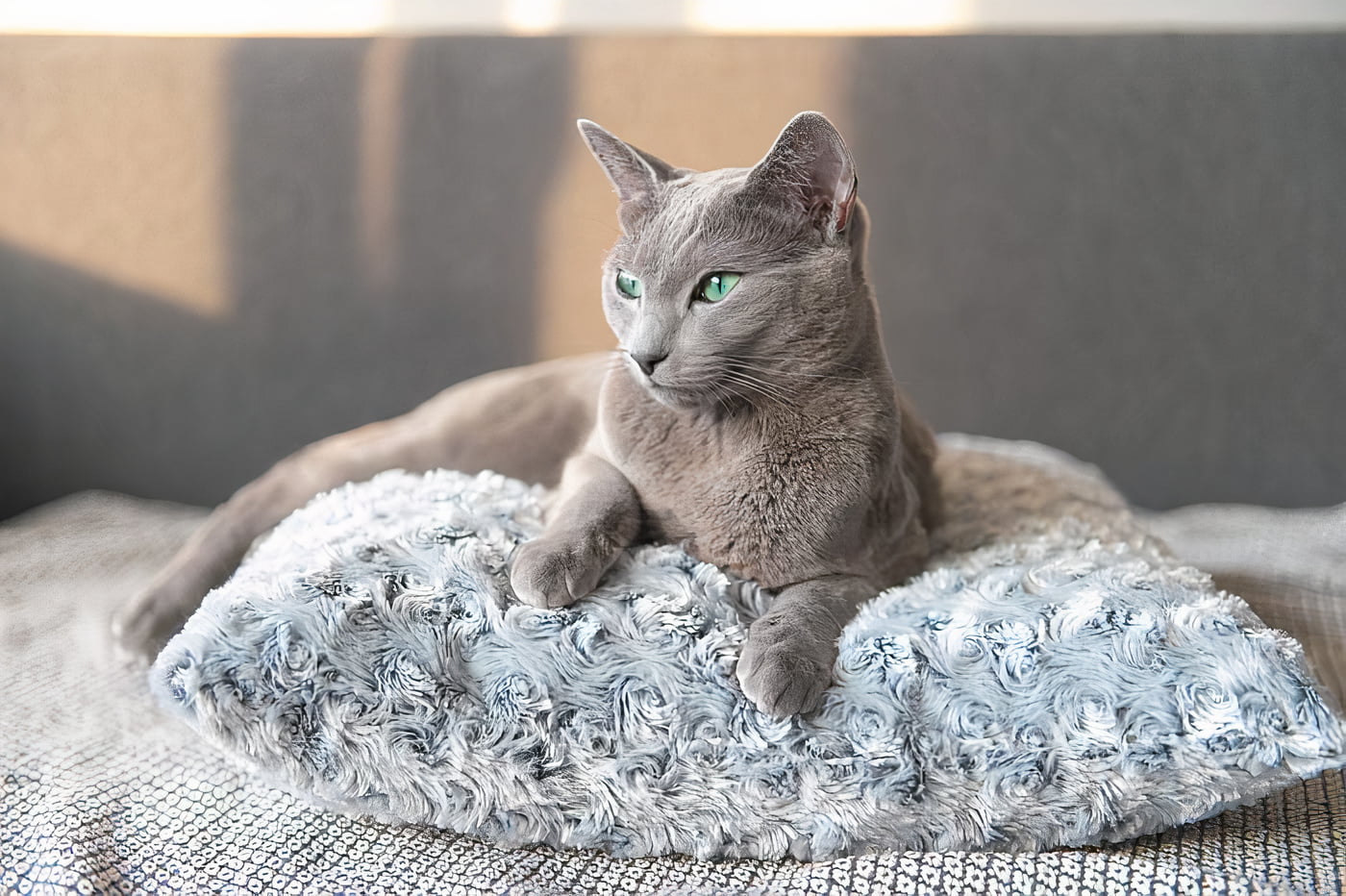
Socialization and Compatibility with Other Pets
Russian Blue cats are known for their social nature and compatibility with other pets. They are generally friendly and affectionate with their human family and enjoy spending time with them. When it comes to other pets, Russian Blues tend to do well with dogs and other cats if properly introduced and socialized from a young age.
It is important to introduce a new Russian Blue kitten to other pets slowly and under supervision, allowing them to get used to each other’s scent and presence. A slow and gradual introduction can help prevent any potential conflicts or misunderstandings. With patience and consistent positive reinforcement, Russian Blues can learn to coexist and even become friends with other pets in the household.
It is also important to provide enough space, resources, and attention for all pets in the household. This can help prevent competition and jealousy between pets, as well as promote a harmonious and happy living environment.
Russian Blue cats are social creatures and thrive on interaction and companionship, whether it be with humans or other pets. With proper socialization and care, they can make wonderful additions to multi-pet households and bring joy and companionship to all those around them.
Interesting Facts and Anecdotes About Russian Blue Cats
- Russian Blue cats are known for their intelligence and problem-solving skills. They have been known to figure out how to open doors, cabinets, and even the refrigerator!
- It is believed that the Russian Blue cat was a favorite of Russian czars and aristocrats, who treasured them for their beauty and affectionate nature
- In the 1940s, a Russian Blue named “Mrs. Chippy” became famous for accompanying Sir Ernest Shackleton on his Antarctic expedition. Mrs. Chippy was a male cat, named by the expedition’s carpenter, who didn’t realize the cat’s true gender until after he had given him the name
- Some Russian Blue cats are born with a unique trait called “ghost striping.” This is a faint tabby-like pattern that is only visible when the light hits the fur at a certain angle
- Russian Blues have been featured in a number of books, films, and TV shows, including the children’s book “The Cat Who Walked a Thousand Miles” and the animated film “The Secret Life of Pets 2.”
- The Russian Blue cat is the mascot of the Russian Olympic team and has been featured on Russian postage stamps
Whether you are a seasoned Russian Blue owner or just discovering this amazing breed, there is always something new and fascinating to learn about them.

